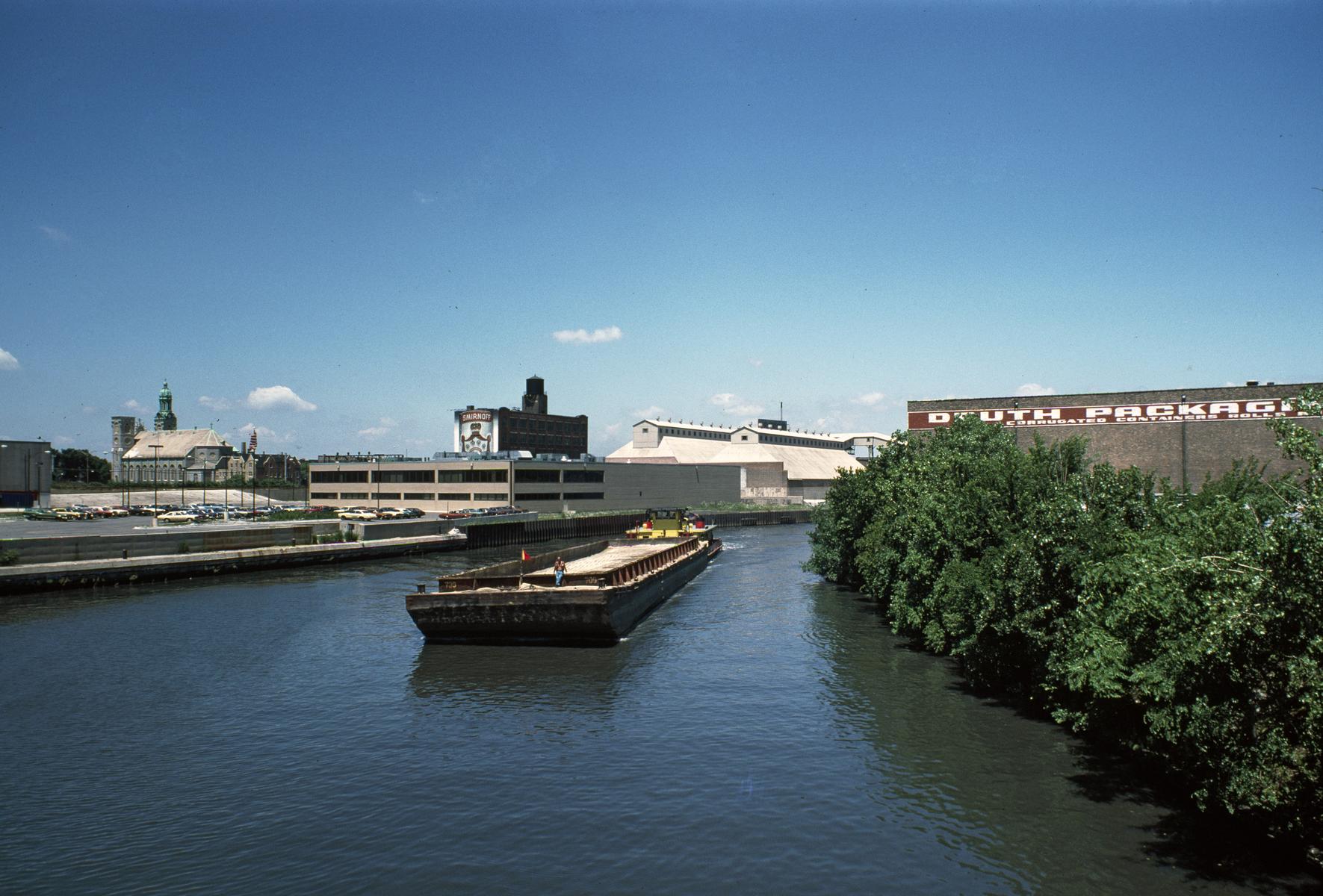
Recreation aside, the Chicago River is also an enormous asset to the city’s industry and commerce. According to the Army Corps of Engineers, a staggering 200,000 tons of commercial cargo passed through the Chicago Harbor Lock, the gateway separating the river from Lake Michigan, in 2012. Chicago is a city built with transportation at its core
“The river is the most environmentally-friendly, economical method of transportation,” said Paul Ozinga, co-owner of executive vice president of Ozinga, a concrete supplier and materials and logistics company.
A single barge can hold roughly 70 truckloads of material, or approximately 1,500 tons. Moving materials–concrete, sand, stone, iron, mulch, or debris–by the Chicago River not only saves money, but it also reduces the amount of congestion in the city’s streets and consumes fewer fossil fuels. Using barges reduced carbon dioxide and greenhouse gases by 90 percent compared to semi-trucks. Last year, Ozinga has moved over 2 million tons of materials by barge via the river.
“It’s frankly a much safer and much cleaner alternative to use the river system for both construction and demolition,” said Steve King, Ozinga’s materials and logistics executive vice president of business and development.
Ozinga put the Chicago River to full use during the demolition of 110 North Wacker Drive. As any local knows, North Wacker is a notoriously congested area that receives an inordinate amount of truck traffic due to the large number of commercial buildings with loading docks located along Lower Wacker. Usually, for a demolition job such as this, trucks are brought in to haul away every scrap of debris. But rather than add to this congestion, Ozinga simply shipped all the debris from the demolition by barge.
“We barged out about 17,000 tons,” said King. “That’s the equivalent of 850 semi-trucks and about 1,700 truck trips. Doing that on Wacker Drive is quite challenging, even on a good day.”
King also highlighted the fact that barges simply offer projects more space.
“In Chicago, there’s not much area this isn’t already built,” he said. “So there’s really not staging space.”
The Wacker demolition site literally overhangs the Chicago River, so barges were brought into to create more space in the crowded downtown area where none previously existed.
Moving forward, King believes that the Chicago River will gain more importance in construction projects in Chicago. While a particular job site might not be right on the waterway, like 110 North Wacker Drive, King thinks that a project’s proximity to the river will be taken into greater consideration as the waterway can be utilized by builders in so many ways.
Ozinga will continue using the river to help move materials and assist with logistics jobs. The company is also working with the built world community and encouraging them to use the river as an alternative to trucking.
“We are working with developers and builders on the river’s edge to accomplish jobs without a lot of inbound or outbound truck traffic,” said Paul Ozinga. “We can improve the built environment by expanding the scope of the amazing logistics network that the Chicago River is.”
This article was brought to you in partnership with Ozinga. To learn more about them visit their website. Interested in hearing more about their usage of the Chicago River, then watch the BuiltWorlds website for video of Tim Ozinga speaking on our Cities Conference‘s “City Infrastructure” panel.

Discussion
Be the first to leave a comment.
You must be a member of the BuiltWorlds community to join the discussion.